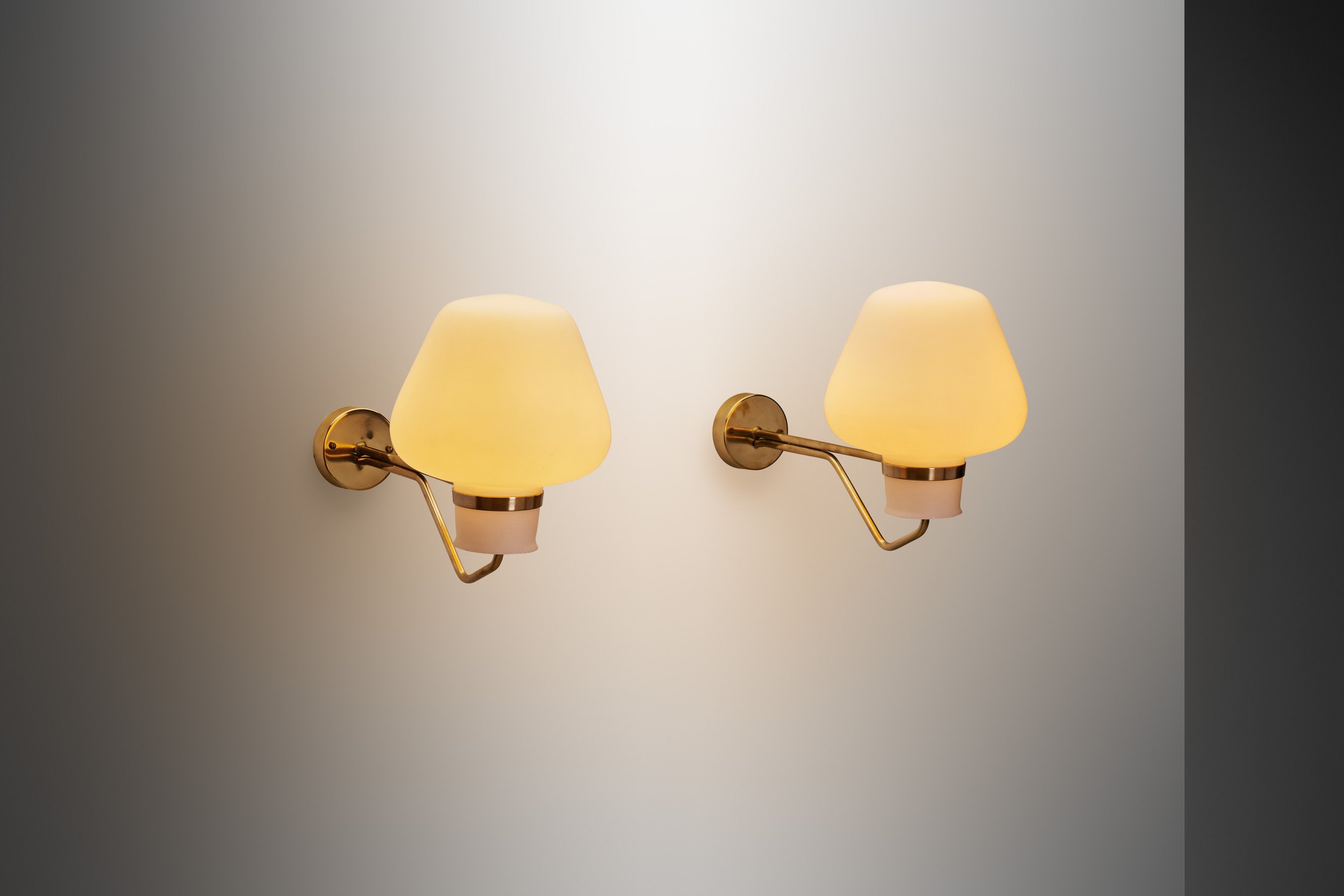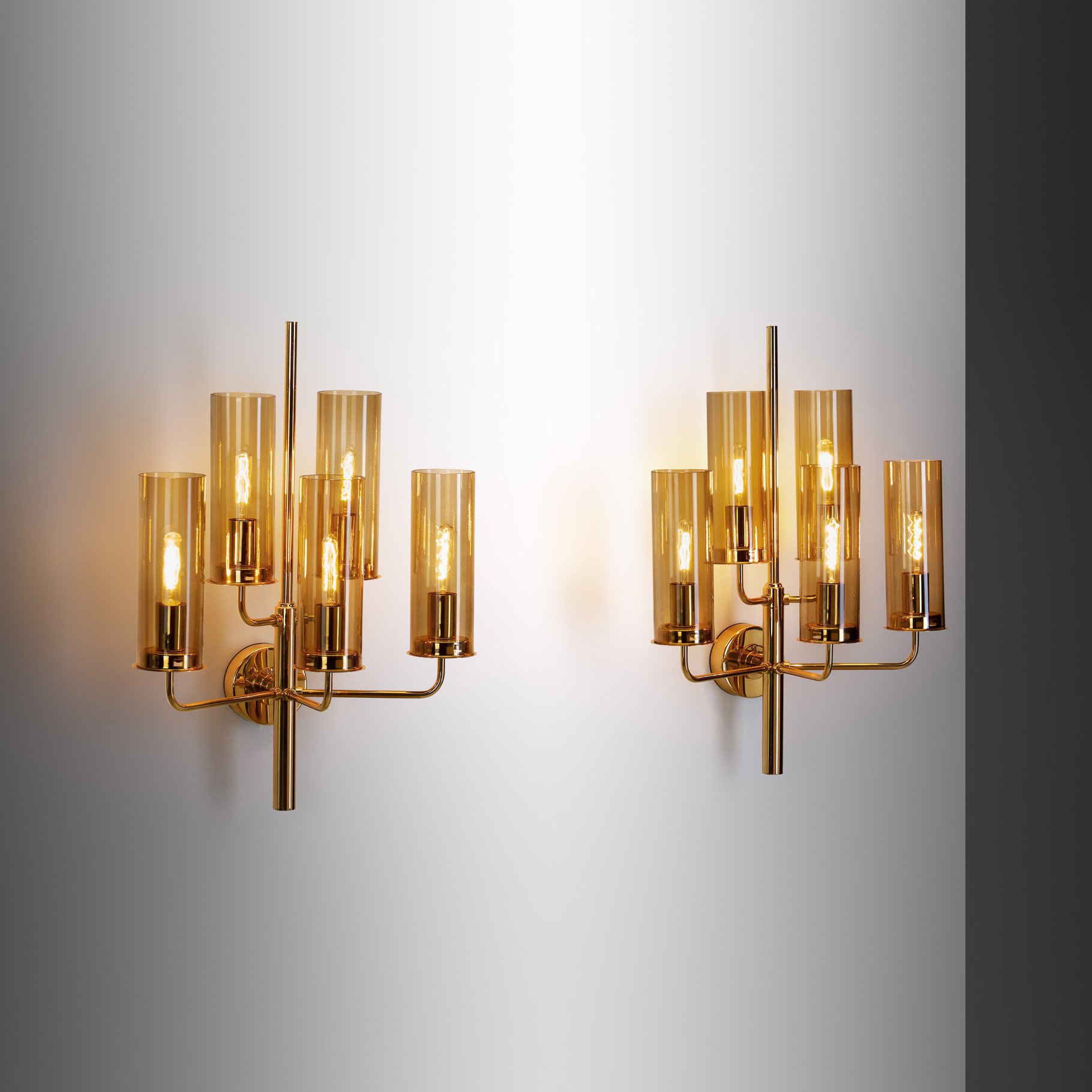Peter Celsing Wall Sconce for Falkenbergs Belysning, Sweden 1966







Peter Celsing Wall Sconce for Falkenbergs Belysning, Sweden 1966
REQUEST PRICE HERE
Price category: 1,000 - 2,500 usd / eur
This stylish wall scone was designed by Peter Celsing for Falkenberg in 1966 for the cultural center Kulturhuset in Stockholm.
The modernistic look is achieved by simple, yet smart design of the silhouette. The yellow brass body gently reflects the light, which can be elevated even more with diverse lightbulbs. The concave bowl is slightly lifted from the wall by a matte, black lacquered ring, giving it an almost floating appearance. The bulb is placed directly in the centre of the bowl, reflecting the warm subdued light evenly across the room.
This Celsing sconce model is celebrated for its simple but iconic design, bringing modernity into any setting. The Swedish Falkenbergs Belysning was an excellent manufacturer of various lighting designs, with some of them exhibited in museums to this day.
Condition:
In very good vintage condition. Item has some minor marks, a little dimple on the edge.
Dimensions:
11.42 in Ø x 5.91 in H
29 cm Ø x 15 cm H
About the designer:
Peter Elof Herman Torsten Folke von Celsing (January 29, 1920 – March 16, 1974) was a Swedish modernist architect.
He was born in Stockholm, Sweden and studied at the architectural school of the Royal Institute of Technology in Stockholm, and at the Royal Swedish Academy of Arts. Celsing has been the assistant of the widely known Swedish architect Sigurd Lewerentz. According to Adam Caruso, it was Celsing that helped Lewerentz to win the design competition for the Church of St. Mark (Markuskyrkan). This building and the later St. Petri Church (Olaus Petri kyrka) are now known as a starting point of brutalist architecture.
He later became professor of architecture at the Royal Institute of Technology. After working for some time in Beirut, he became head of the architectural office of AB Stockholms Spårvägar, the Stockholm tram and local railway authority, and designed a number of suburban metro stations. He also designed several churches: in Härlanda (Gothenburg), Almtuna (Uppsala), and Vällingby, a much-publicized modernist suburb of Stockholm.
Celsing often worked in a brutalist style with large exposed grey concrete surfaces, but occasionally combined this with large glass panes exposing the structure of the building from the outside, and interior details in wood. The best-known example of this are the Kulturhuset (House of Culture) at Sergels torg in central Stockholm (1966–1971). While he is mostly remembered as an architect, Celsing also designed furniture, mainly lighting, which reflects his talent in both architectural and furniture design. ~H.












